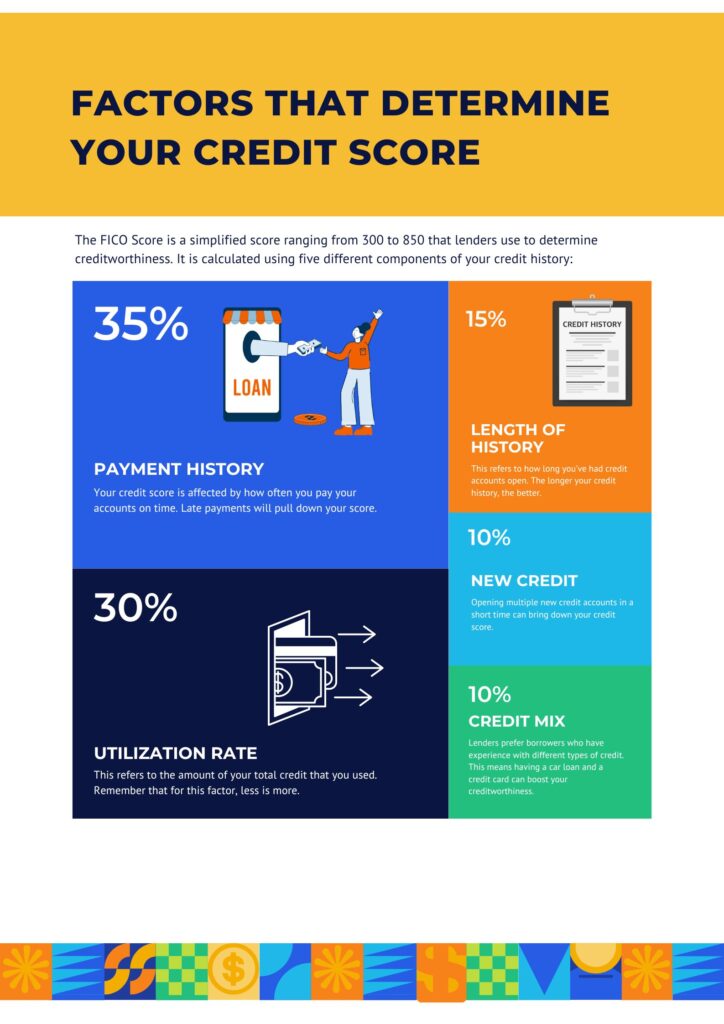When it comes to your finances, there are a few important numbers that you should keep a close eye on. These are your bank account balance, expenses, and even your debt levels. But the number that can open a lot of financial opportunities is your credit score.
This three-digit figure can determine whether you can get the loan for your business expansion or if you can secure that house of your dreams. But what exactly is a credit score? Why does it matter so much?
In this chapter, we will look into the basics of credit scores. We’ll dive into what they are, how they are computed, and how they can influence lenders and creditors.
Simply put, your credit score is the numerical representation of your creditworthiness. It is the summary of your financial history, giving lenders an efficient way to evaluate how much risk they could be facing when lending you money. A high credit score generally means that you’re a low-risk borrower. This means you’re more likely to repay your debts responsibly.
Credit scores range from 300 to 850. The higher the number, the better the individual’s credit health. Note that the range and scoring criteria might vary depending on the credit scoring model used. The most common credit scoring models lenders rely on are FICO (Fair Isaac Corporation) and VantageScore.
Factors that Influence Your Credit Score

Credit reporting companies consider several factors in computing your credit score. While the exact weight assigned to each factor can vary between scoring models, the core components remain relatively consistent:
- Payment History: This is one of the most critical factors in evaluating your credit score as it accounts for 35% of your FICO score. Payment history reflects how responsible you are in making payments on your loans. Late payments, defaults, bankruptcies, and foreclosures can all negatively impact your score.
- Credit Utilization Ratio: Your credit utilization ratio accounts for 30% of your FICO credit score. This number represents how much of your total available credit you are currently using. To paint a clearer picture, if your credit limit on a card is $1,000 and you spent $500, your current credit utilization ratio is 50%. Keeping this ratio low will reflect positively on your credit score. Experts recommend that you keep your credit utilization below 30% to signal financial stability.
- Length of Credit History: The length of your credit history accounts for 15% of your FICO score and 21% of your VantageScore. It refers to how your credit accounts have been open and active. It considers the age of your oldest and newest account, as well as the average age of all of your accounts. Generally, the longer your credit history, especially if it comes with a positive payment record, the better your credit score is.
- Types of Credit: Your credit score may be improved by having different types of credit. This can include a mix of accounts from mortgage loans, installment loans, credit cards, and retail accounts. Lenders prefer clients who can handle different kinds of credit and make payments on time. Your credit mix accounts for 10% of your FICO score.
- New Credit: Opening several new credit accounts in a short period can be seen as risky behavior. Each new account results in a hard inquiry on your credit report, which can temporarily lower your score. Plus, opening new credit lowers the average age of your total account, which in turn lowers your credit score.
FICO vs. VantageScore: Understanding Different Scoring Models
FICO and VantageScore are the two most prevalent credit scoring models used by lenders. While they share similarities in evaluating creditworthiness, there are some distinctions to be aware of:
FICO Score:
- Created by the Fair Isaac Corporation, a data analytics company.
- Used by many lenders for various types of loans, including mortgages, auto loans, and credit cards. In fact, more than 90% of the top lenders rely on this score.
- Has several industry-specific versions, such as FICO Auto Score and FICO Mortgage Score.
VantageScore:
- Developed by the three major credit bureaus (Equifax, Experian, and TransUnion).
- Gaining popularity and a wide range of lenders use it. Plus, top banks, leading fintech, and major credit unions rely on this score for their decisions.
- Uses a similar scoring range as FICO (300-850), but has minimum credit score criteria and score values.
Understanding these two scoring models that lenders use can give you insights into how your credit is being evaluated. Remember that the specific formula used to calculate your score might not be disclosed, but knowing the general factors can guide your efforts to improve it. Additionally, knowing which model your potential lender favors can help you make informed decisions when you embark on your credit-building journey.
In the next chapter, we’ll take a closer look at credit scores. We will look into the nuances of FICO and VantageScore and explore how to access and monitor your scores. You’ll have an easier time taking control of your financial future if you understand how these work.
Next: Chapter 2: Unveiling Credit Reports, where we’ll explore the detailed records that shape your credit scores.